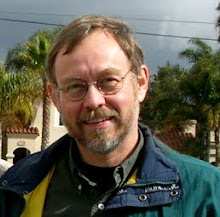Sam well deserved his position as one of the most influential and well known woodworkers in the world. But as much as Sam was a master woodworker, he was an even greater human being.
My Meeting with Sam
In February of 2007 I was teaching a class at William Ng’s in Anaheim. One of my students (Jim) was a docent at Sam Maloof’s. Since I was not available during the day to tour Sam’s house (museum) Jim arranged for myself and two others to have a special after-hour’s tour. I was told there were no guarantees of meeting Sam. After arriving, Jim proceeded to give us the tour,but few minutes later, Sam came walking in, and upon seeing us took over as tour guide.
This was incredible - not only did we get to meet Sam but he was taking the time to personally give us the tour! I could not believe our good luck - I was blown-away!
At one point Sam pulled the velvet rope aside and said “let’s set down for a moment”!

Afterwards Sam invited us down to his house (where he actually lived). We visited for another hour or so while setting on Sam’s furniture.
Sam had no idea who we were – but made time for us nonetheless. Sam was very humble and easy to talk to - as if he were just a regular guy. He was unaffected by his fame. I have heard many stories similar to mine – Sam was always willing to give of himself. He was an extraordinary human being!
I bought Sam’s book and had him sign it. He wrote “To Darrell Peart – Blessings/Peace – Sam Maloof - February 2007”.
Blessings and Peace upon you Sam – you will greatly missed.





